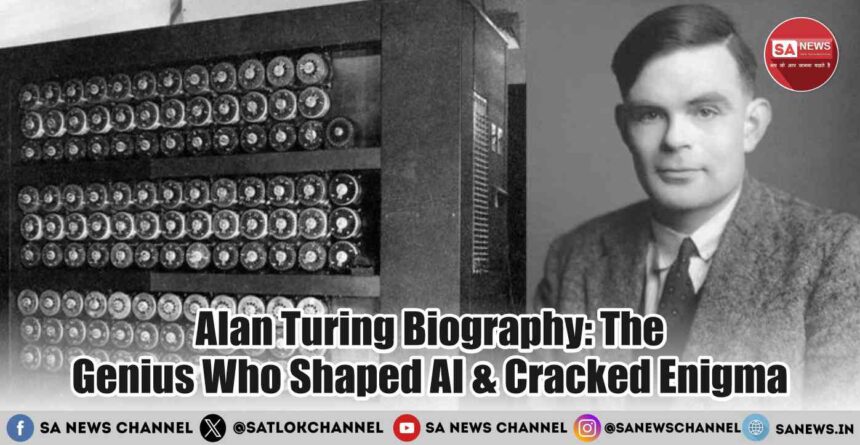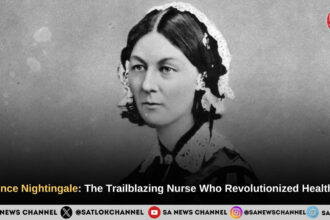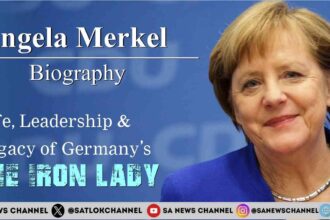Alan Turing Biography: Who Was Alan Turing? The Father of Modern Computing. Alan Turing was a visionary mathematician, computer scientist, and a cryptanalyst. Turing’s groundbreaking work and efforts laid the foundation for modern computing and artificial intelligence. Now a question may arise:
- Alan Turing’s Early Life and Education: How a Mathematical Genius Was Born
- The Turing Machine: How Alan Turing Shaped Computer Science
- Alan Turing and World War II: Cracking the Enigma Code
- The Birth of Artificial Intelligence: Alan Turing’s Role in AI Development
- Alan Turing’s Contributions to Computer Science and Mathematics
- Research in Mathematical Biology and Morphogenesis
- Alan Turing’s Persecution and Tragic Death: A Dark Chapter in History
- Alan Turing’s Legacy: How He Changed the World Forever
- The Turing Award: The Nobel Prize of Computer Science
- Alan Turing in Popular Culture: Movies, Books, and Documentaries
- Conclusion: Alan Turing’s Everlasting Impact on Technology and Humanity
- Breaking code Vs Breaking Illusions
- FAQs: Biography of Alan Turing
- 1. Who was Alan Turing and why is he famous?
- 2. What was Alan Turing’s role in World War II?
- 3. How did Alan Turing contribute to artificial intelligence?
- 4. What was the impact of Alan Turing’s chemical castration?
- 5. What books tell Alan Turing’s story?
- 6. How did Alan Turing’s work shape modern computing?
- Connect With Us on the Following Social Media Platforms
Is artificial intelligence influenced by Alan Turing? Yes, he was the one who laid the foundation for AI today, decades ago. He is best known for his role in breaking the Enigma code in World War II. Despite his immense contributions, he was prosecuted at the age of 41. This article is devoted to Alan Turing’s life, achievements, and his lasting legacy.
Alan Turing’s Early Life and Education: How a Mathematical Genius Was Born
Alan Turing Biography: Alan Turing was an English mathematician and computer scientist. As a computer scientist, he made pioneering contributions to cryptography, artificial intelligence, and theoretical computing. His significant work in breaking the Nazi Enigma code shortened World War II.
This saved millions of lives. Alan was born on 23rd June 1912 in London. Alan Turing had exceptional mathematical abilities from a very young age. He studied at Sherborne School. He developed an interest in logic, problem-solving skills, and cryptography.
Alan Turing’s Education at Sherborne School
Alan Turing Biography: Turing attended King’s College, Cambridge. There, he excelled in mathematics. He introduced the concept of the Turing Machine. What is the Turing Machine? This machine was based on computable numbers. This method formed the basis of modern computation. Turing obtained a PhD from Princeton University and further advanced his encryption, algorithm, and mathematical logic.
The Turing Machine: How Alan Turing Shaped Computer Science
Alan Turing Biography: His research in computability theory laid the foundation of what computer science is today. His work addressed the fundamental question: Can every problem be solved algorithmically? In his paper “Computing Machinery and Intelligence” in 1950, Turing asked: Can machines think? To answer this question, he proposed the Turing Test, a method to determine if machines can exhibit human-like intelligence. This revolutionized computing and programming languages.
Alan Turing and World War II: Cracking the Enigma Code
Alan Turing Biography: During World War II, Turing played a critical role in defeating Nazi Germany by decoding the Enigma cipher. Turing, working at Bletchley Park, developed innovative techniques to decipher the code. This helped the Allies decipher and intercept enemy messages.
Bombe Machine: Enigma Code Breaking Invention
Alan Turing Biography: How Alan Turing broke the code. He invented the Bombe machine. The Bombe Machine was an electromechanical device that dramatically speed up the process of encoding the Enigma code. His work is credited with shortening the war by at least two years.
What is the Nazi Enigma Code?
Alan Turing Biography: The Nazi Enigma code is a complex encryption system used by Nazis in World War II to secure military communication. This code was based on an Enigma machine, which was an electromagnetic cipher device. It was used to generate coded messages that were nearly impossible to decipher without proper knowledge.
Also Read: Modern Parenting: Striking the Balance Between Tradition and Progress
The Birth of Artificial Intelligence: Alan Turing’s Role in AI Development
Alan Turing Biography: Turing was one of the first persons to explore the idea of Artificial Intelligence (AI), questioning whether machines could think like humans. In 1950, he proposed the Turing Test. This test remains a benchmark in the world of artificial intelligence today.
Alan Turing’s Contributions to Computer Science and Mathematics
Alan Turing Biography: Alan Turing’s work went beyond cryptography and AI. He played a crucial role in developing modern computers. He designed the Automated Computing Engine (ACE). It was one of the earliest stored-program computers. His vision influenced modern digital computers.
Research in Mathematical Biology and Morphogenesis
Alan Turing Biography: Alan Turing’s works and contributions were not just limited to mathematics and computer science. He applied his expertise to biology as well. His research, “The Chemical Basis of Morphogenesis,” is relevant even today. Morphogenesis is a biological process that causes organisms to change their shape and patterns. He explained patterns in nature, like stripes on zebras and sunflower spirals, through mathematical equations.
Alan Turing’s Persecution and Tragic Death: A Dark Chapter in History
Alan Turing Biography: Despite his remarkable contributions to science and technology, Alan Turing was persecuted due to his homosexuality. Homosexuality was illegal in Britain at the time. In 1952, he was convicted of Gross Indecency, and he was sentenced to chemical castration as an alternative to prison. He was given hormonal treatment to suppress his libido.
He was forced to take estrogen injections, which nearly destroyed his natural hormonal cycle and caused many hormonal and psychological changes. Not only did he experience breast enlargement and other physical side effects, but he also found this treatment isolated him socially and professionally.
The Controversial Death of Alan Turing
Alan Turing Biography: On June 7, 1954, Turing was found dead from cyanide poisoning at his home. An apple allegedly laced with cyanide was found beside his bed. His death was ruled as suicide, but some believed it was accidental. The circumstances remained a topic of debate.
Alan Turing’s Legacy: How He Changed the World Forever
Alan Turing Biography: Today, Alan Turing is remembered as one of the greatest minds in the history of mankind. His contributions shaped modern computing, cybersecurity, and artificial intelligence.
The Turing Award: The Nobel Prize of Computer Science
Alan Turing Biography: This award honors outstanding contributions to computing. To honor Turing, this award was established in 1966. It is also called the Nobel Prize in computing. It is awarded annually to individuals who show excellence and make significant achievements in computer science. In 2023, Avi Wigderson was awarded this prize for his notable contributions to theoretical computer science. In 2024, Andrew G. Barto and Richard S. Sutton received this award for developing the conceptual and algorithmic foundations.
Alan Turing in Popular Culture: Movies, Books, and Documentaries
Alan Turing Biography: Alan Turing’s life story is widely recognized in books and films. The movie The Imitation Game brought his story to a global audience. In other documentaries and biographies, his life story, struggles, and his genius mind have been highlighted.
Books that highlight Alan Turing
- Alan Turing: The Enigma – Andrew Hodges
- The Imitation Game: Alan Turing Decoded – Jim Ottaviani & Leland Purvis
- Alan Turing: Unlocking the Enigma – David Boyle
- Turing’s Cathedral: The Origins of the Digital Universe – George Dyson
- The Man Who Knew Too Much: Alan Turing and the Invention of the Computer – David Leavitt
Conclusion: Alan Turing’s Everlasting Impact on Technology and Humanity
Alan Turing Biography: Alan Turing’s work is still relevant today. He not only changed the course of World War II but also paved the way for the digital revolution. His legacy continues to inspire scientists, engineers, and AI researchers worldwide. His contributions to artificial intelligence, cybersecurity, and cryptography are a priceless legacy.
In 2013, the British Government officially pardoned Alan Turing for his conviction and acknowledged the mistreatment he endured. In 2021, Alan was featured on the £50 banknote for his contributions to computing and code-breaking. Today, he is rightfully remembered as a genius who changed the world forever.
Breaking code Vs Breaking Illusions
Alan Turing paved the way for digitalization and artificial intelligence. He broke the Enigma code, which shortened World War II. Similarly, Saint Rampal Ji Maharaj broke the illusion of Heaven and Hell, revealing our eternal home, Satlok, by decoding the hidden meanings in the Shastras and religious texts. This not only paves the way for salvation but also helps build a better, crime-free, and addiction-free society.
Saint Rampal Ji Maharaj has deciphered the true Tatvgyan and has shortened the cycle of 8.4 million rebirths to just one. According to Bhagavad Gita, Chapter 4, Verse 34, one must seek guidance from a Tatvdarshi Sant because only he can reveal the path to Satlok, the ParamDhaam, by interpreting the true meaning of the scriptures.
Saint Rampal Ji Maharaj is the complete Tatvdarshi Saint. Come and transform both your worldly and spiritual life. For more information, visit Saint Rampal Ji Maharaj YouTube channel.
Nau man soot Ulajhiya, Rishi Rahe Jakhmaar |
Satguru Esa suljha de phir uljhe na duji baar ||
FAQs: Biography of Alan Turing
1. Who was Alan Turing and why is he famous?
Alan Turing was a British mathematician, cryptanalyst, and computer scientist known for breaking the Nazi Enigma code and laying the foundation for modern computing and artificial intelligence.
2. What was Alan Turing’s role in World War II?
Turing led efforts at Bletchley Park to crack the Enigma code, significantly shortening the war and saving millions of lives.
3. How did Alan Turing contribute to artificial intelligence?
Turing developed the Turing Test, a benchmark for AI, and introduced key concepts in machine learning and neural networks.
4. What was the impact of Alan Turing’s chemical castration?
He suffered severe physical and mental distress, which ultimately led to his tragic death in 1954.
5. What books tell Alan Turing’s story?
Some notable books include Alan Turing: The Enigma by Andrew Hodges and Turing’s Cathedral by George Dyson.
6. How did Alan Turing’s work shape modern computing?
His concept of the Turing machine laid the groundwork for computer algorithms and digital computing systems.









